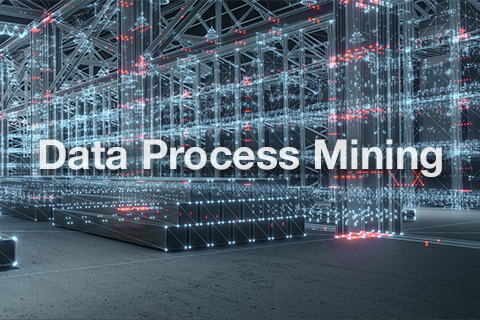Why you should not do without logistics consulting
Read more

Recently, data process mining has been much discussed in the logistics world. It is important to note that this is more than just a short-term fad. Behind the somewhat unwieldy sounding name lies a powerful tool for identifying inefficiencies and optimization potential. In this article, we shed light on what exactly is behind it and clarify what it does in the logistics environment and along the supply chain.
Developments such as the Internet of Things, as is already being used with networked objects, for example, are constantly providing us with data about business processes. But they only become really exciting when these volumes of data are put into perspective: When we know how the processes are linked to each other or what happens if the connection breaks at one point or moves in a different direction. This is exactly where data process mining comes in.
The catch with the mere collection of data in the company was that this did not bring any helpful insights to light. Until now, you had to deduce correlations yourself in order to find out, for example, why bottlenecks or loops occurred in logistics. To automate this work, data process mining tools combine and visualize data. This is exactly why data process mining is also referred to as the "process optimization of the future".
The term "data process mining" is a combination of the established terms "data mining" and "business process management". Perhaps you have already heard or read other names for the same subject matter. Process mining or the paraphrase that it is a "Big Data"-based process analysis all refer to the same analytical method of examining real business processes with digital, data-driven methods and then reproducing them visually.
Inefficient business processes that can be optimized in this way include sales, supply chain and manufacturing processes. The key is that, unlike conventional process analysis methods, data process mining can capture not only isolated process flows of individual sections, but those of the entire company. Take, for example, the provision of materials in production or orders with external processing. Questions can be answered such as "How quickly are tickets or customer orders answered?" or "Which processes are currently not running smoothly and could be automated?"
Valid data and measurable facts in the company form the basis for process analysis - as digital traces left in the IT systems. Then the advanced technology methods of data process mining tools are added. Through data process mining, processes are broken down: completely visually represented, viewers can recognize all relationships/interaction between data layers and identify patterns. Want an example? Any gaps between business processes in the supply chain become undeniably visible thanks to the tools. The focus is on being able to make deductions for improvements from the processes and bottlenecks that have been made visible.
But how can you get started in the logistics environment? The starting point of a process mining project is always a concretely formulated question and the specification of the process or problem to be addressed.
Data process mining is all about transparency and reveals gaps and deviations. Of course, this also leads to the fact that the topic of "data protection" inevitably comes into play. From a data protection point of view, this is difficult terrain if it is planned to collect and pass on sensitive data. In individual cases, it may also become apparent that, for example, user or customer information is not necessary for solving the problem or that data in anonymized form is sufficient. But in any case, the use and processing of personal data must be reviewed in advance from a legal perspective.
The "process optimization of the future" has it all. Because data process mining enables companies to gain in-depth knowledge and to say without a doubt where the weak points and bottlenecks are in their business or logistics processes. This saves costs and contributes to the long-term elimination of stumbling blocks. Data Process Mining has what it takes to turn our often divided relationship to data collection and analysis methods upside down and to reduce skepticism. Those who are still hesitant about whether the method is worthwhile will be thrilled at the latest when they see that it is no longer just a short section that is visualized transparently and comprehensibly, but an entire process with all its side paths.